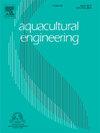UVA-LED365 nm和UVC-LED275 nm联合照射可有效灭活副溶血性弧菌,并通过调节光照控制光再激活
IF 4.3
2区 农林科学
Q2 AGRICULTURAL ENGINEERING
引用次数: 0
摘要
紫外线消毒是控制水产养殖大规模疫病暴发的常用消毒方法。本研究以水产养殖中常见的致病菌副溶血性弧菌为研究对象,研究UVA-LED(365 nm)和UVC-LED(275 nm)单独照射和顺序照射在灭活效果上的差异。此外,它还研究了不同光照条件对紫外线消毒后副溶血性弧菌光活化的影响和潜在机制。结果表明,UVC-LED对副溶血性弧菌具有优异的灭活效果,在12 mJ/cm²时可降低3.9 log。然而,UVA预处理并没有增强随后的UVC-LED失活。在110 μmol/m²/s的白光下,细菌的光活化生长速率达到106.96 %,显著高于50和170 μmol/m²/s。与其他波长相比,短波长的细菌生长速率相对较高,其中蓝光的生长速率达到143.48 %,并且光解酶基因的表达显著。而红光和绿光则明显抑制了光活化作用。相关分析表明,光活化过程中细菌生长速率与恢复时间和光强呈正相关,与光谱波长负相关。本研究阐明了UVA-LED和UVC-LED灭活效率的差异,以及影响副溶血性弧菌光活化的因素。为了减轻光再激活,在后处理阶段增加光强度和避免短波长的照射为UV-LED水消毒系统提供了有价值的见解。本文章由计算机程序翻译,如有差异,请以英文原文为准。
UVA-LED365 nm and UVC-LED275 nm combined irradiation effectively inactivates Vibrio parahaemolyticus and controls photoreactivation by regulating illumination
Ultraviolet disinfection is a common disinfection method for controlling large-scale disease outbreaks in aquaculture. This study investigated Vibrio parahaemolyticus, a common pathogen in aquaculture, to elucidate the differences in inactivation efficacy between UVA-LED (365 nm) and UVC-LED (275 nm) irradiation, both individually and in sequence. Additionally, it examined the effects and underlying mechanisms of various light conditions on the photoreactivation of V. parahaemolyticus following ultraviolet disinfection. The results demonstrated that UVC-LED achieved superior inactivation efficacy against V. parahaemolyticus, with a 3.9 log reduction at 12 mJ/cm². However, UVA pretreatment did not enhance the subsequent UVC-LED inactivation. Additionally, the bacterial growth rate of photoreactivation reaching 106.96 % under a white light at the intensity of 110 μmol/m²/s, which was significantly higher than that at 50 and 170 μmol/m²/s. Compared to other wavelengths, short wavelengths resulted in a relatively higher bacterial growth rate, with blue light achieving a rate of 143.48 % and significant expression of photolyase genes. In contrast, red and green light significantly inhibited the photoreactivation effect. Correlation analysis demonstrated that the bacterial growth rate was positively correlated with recovery time and light intensity during photoreactivation, while it was negatively correlated with spectral wavelength. This study clarified differences in inactivation efficiency between UVA-LED and UVC-LED, as well as the factors affecting photoreactivation of V. parahaemolyticus. To mitigate photoreactivation, increased light intensity and the avoidance of short-wavelength irradiation during the post-treatment phase provided valuable insights for UV-LED water disinfection systems.
求助全文
通过发布文献求助,成功后即可免费获取论文全文。
去求助
来源期刊

Aquacultural Engineering
农林科学-农业工程
CiteScore
8.60
自引率
10.00%
发文量
63
审稿时长
>24 weeks
期刊介绍:
Aquacultural Engineering is concerned with the design and development of effective aquacultural systems for marine and freshwater facilities. The journal aims to apply the knowledge gained from basic research which potentially can be translated into commercial operations.
Problems of scale-up and application of research data involve many parameters, both physical and biological, making it difficult to anticipate the interaction between the unit processes and the cultured animals. Aquacultural Engineering aims to develop this bioengineering interface for aquaculture and welcomes contributions in the following areas:
– Engineering and design of aquaculture facilities
– Engineering-based research studies
– Construction experience and techniques
– In-service experience, commissioning, operation
– Materials selection and their uses
– Quantification of biological data and constraints
 求助内容:
求助内容: 应助结果提醒方式:
应助结果提醒方式:


